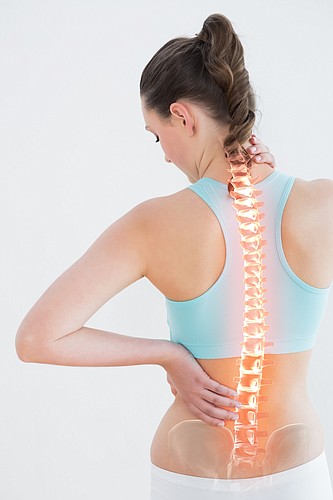-
-
Loading

Loading

Q: How common is it for people to suffer from spine/back pain at some point in their lives?
A: Back pain is very common and can be the result of an injury. Many injuries can be due to overuse during exercising and sports, or awkward movements. Overthe-counter pain relievers and balms can usually help alleviate the pain within a few days.
Q: What is chronic low back pain?
A: Low back pain impacts nearly 80 percent of adults at least once during their lifetime, according to the National Institutes of Health. Most low back pain is short-term, lasting between four and 12 weeks. However, chronic back pain lasts more than 12 weeks. Pain in the low back can include pain that goes into the buttocks, hips or legs (commonly referred to as sciatica). Although low back pain is a common occurrence, some features warrant evaluation from a medical professional, such as persistent or worsening back pain, and neurologic symptoms that may include numbness, weakness, tingling, or changes in bowel or bladder function. Common causes of low back pain include degenerative disc disease, herniated disc, lumbar spinal stenosis (narrowing of the spinal canal), spondylolisthesis (where one vertebra slips forward over the vertebra below it), scoliosis, and traumatic injuries including spinal fractures.
Q: How do you diagnosis spine and back conditions?
A: Advanced diagnostic tests help to locate the exact source of a patient’s spine or back pain. Doctors use imaging, such as CT scans and MRIs, to determine a precise diagnosis. They also use X-ray-guided injections to diagnose conditions.
Q: What are some of the common procedures you perform on patients with back and spine issues?
A: • Lumbar laminectomy - removal of the back portion of a vertebra in your lower back to create more room within the spinal canal
• Lumbar discectomy – removal of a herniated disc
• Lumbar fusion - surgical joining of two vertebrae in the lumbar spine or lower back.
• Cervical discectomy – removal of one or more discs from the neck
• Cervical fusion - links together vertebrae in the neck
Q: What are the recovery times for these surgical procedures and is physical therapy recommended?
A: Depending on the procedure, spine surgery recovery can take between six weeks to 12 months to fully recover. With minimally invasive spinal surgery, recovery times can be significantly reduced. Physical therapy is usually recommended for patients following their procedure to help strengthen the neck and back muscles and to improve range of motion.
If you are experiencing back or spinal pain, call our free physician referral service at 800-454-8215 or visit lwrmc.com.

ERIC SUNDBERG, MD, orthopedic & spine surgeon.